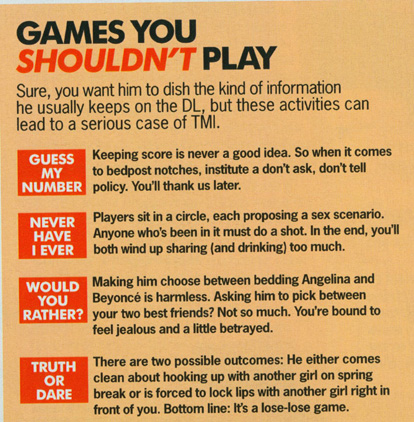|
Just incase the articles do not give enough information for women, a "Man Manual" is included within each issue of the magazine. It is here that a woman can
"learn to interpret the subtle signals he's sending" (Oct 58), as well as finding truth in these claims through the quotes of medical doctors, psychologists,
and authors of relationship help books. Cosmopolitan has never been known to work off of scientific information, but when figures who are
"endowed with authority" (Rose 166) are quoted, articles such as "How to Tell If He's Hooked" (Oct 58) become backed by truth claims. More subtle then
quotes, the Man Manual's use of objective correlates direct a woman in her choosing of the man to hook. The Man Manual opens up with a young, white, shirtless,
muscular boy-man, a signifier Rose feels demonstrates "strong, dependable, [and] irresistible" (Rose 90) - of course a look every girl would want at her side,
right!?! Due to the wording of helpful handout, women have all the reason to think that they can this guy. The use of the words "Man Manual" lend the reader
to view a man as something they can play and control in order to win the diamond ring. Outside of
Cosmoplitan, people receive manuals on how to work their mp3 players, how to program their televisions, how to fix their car, and even how to play games.
Due to the absence of articles in the Man Manual and magazine about 'equality amongst sexes', 'working as a couple towards happiness', or 'waiting until a guy is
ready to marry', it is clear that the discourse is constantly wrapped around the previously stated mythology as well as a belief that women have the power in the
relationship - because of course they have the manual. Rose states that this "invisibility can have just as powerful
effects as visibility" (Rose 165). Both visible and invisible signs work to support that "all knowledge is discursive and all discourse is saturated with power"
(Rose 144), only further substantiating the heteronormativity within broader society.
|

|



